SiC Power Semiconductors for Evs Taking on Unknown Challenges to Achieve Our Mission
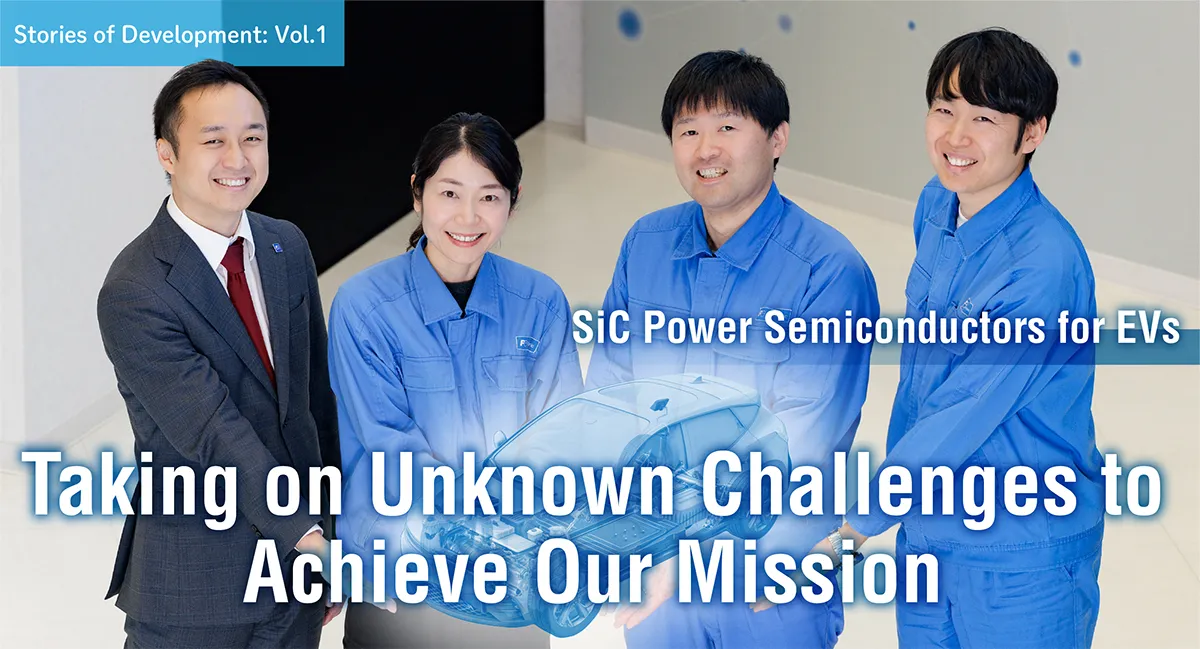
In the fall of 2017, there was a major disruption in the electric car industry: the American automaker Tesla released a new car model using silicon carbide (SiC) instead of the conventional silicon (Si) as a material in the power semiconductor for drive control.
In 2020, the SiC trend accelerated rapidly, with both Japanese and overseas automakers adopting SiC power semiconductors for their electric vehicles. Here, four Fuji Electric employees involved in power semiconductors share their stories about the forefront of the fields of development and sales.

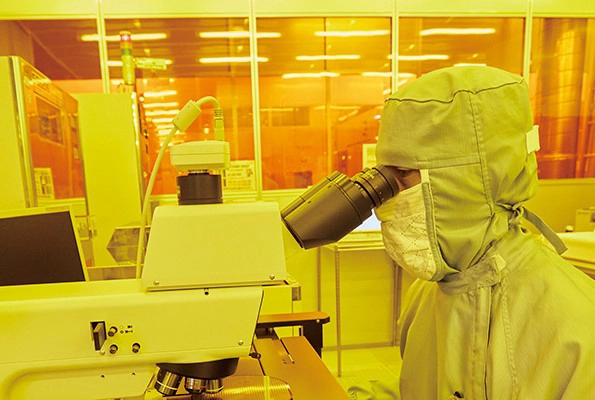
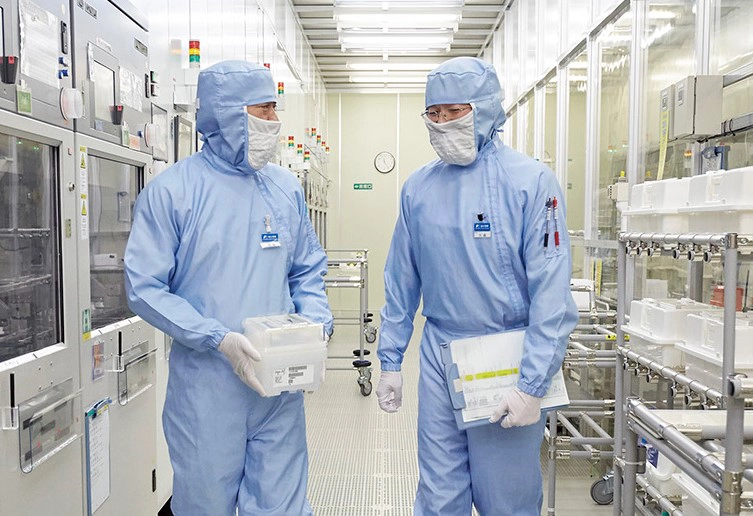
A sudden shift: A new phase for EVs spurred by Tesla
The spread of electrified vehicles (xEVs), such as electric vehicles and hybrid vehicles, has begun to shift toward decarbonization. Fuji Electric has been supplying power semiconductors for electrified vehicles since the early 2000s, and in 2016, we pioneered the development of an RC-IGBT chip,* which significantly reduces power loss in power semiconductors. It contributed to reducing the size and weight of the drive control equipment on which it is mounted, helping automakers to make steady progress with presetting specs.
*A chip that integrates an IGBT (insulated-gate bipolar transistor) and a FWD (free-wheeling diode), which were previously used separately
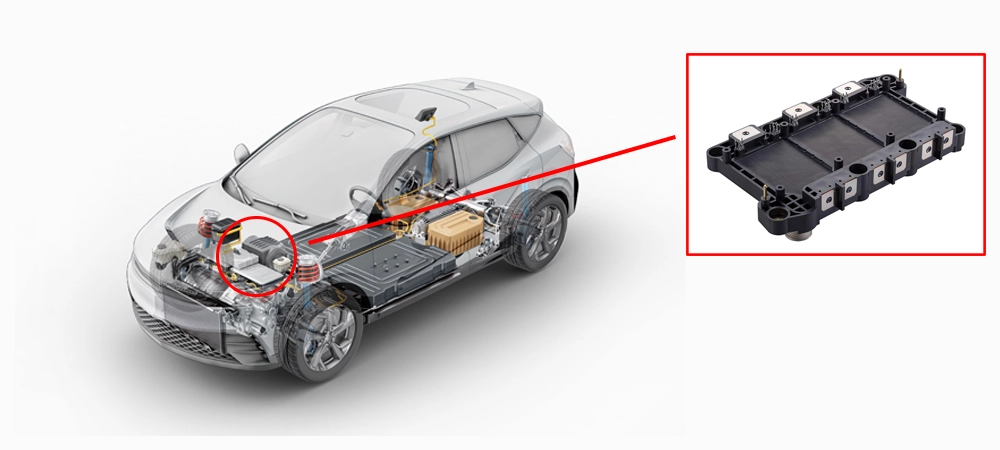
Around September 2021, while the Semiconductors Business Group was finalizing a development plan for the future, business meetings with customers in Japan and overseas were making the automotive sales department keenly aware of the rapidly accelerating demand for SiC power semiconductor proposals. Given this, we determined that the current development plan would not allow us to meet the customer’s requirements, so we asked that the development department speed up their development of competitive SiC power semiconductors.
Kojima, who was in charge of power semiconductor process development, which is called “production technology development,” felt that the age of SiC had finally arrived. He has been involved in the development of SiC ever since he joined the company, so he understood the difficulties of this material better than anyone else.
“SiC is still an immature material,” says Kojima. “In many cases, it is not yet clear what physical properties it has. We and other companies involved in power semiconductors have yet to fully realize its true potential.”
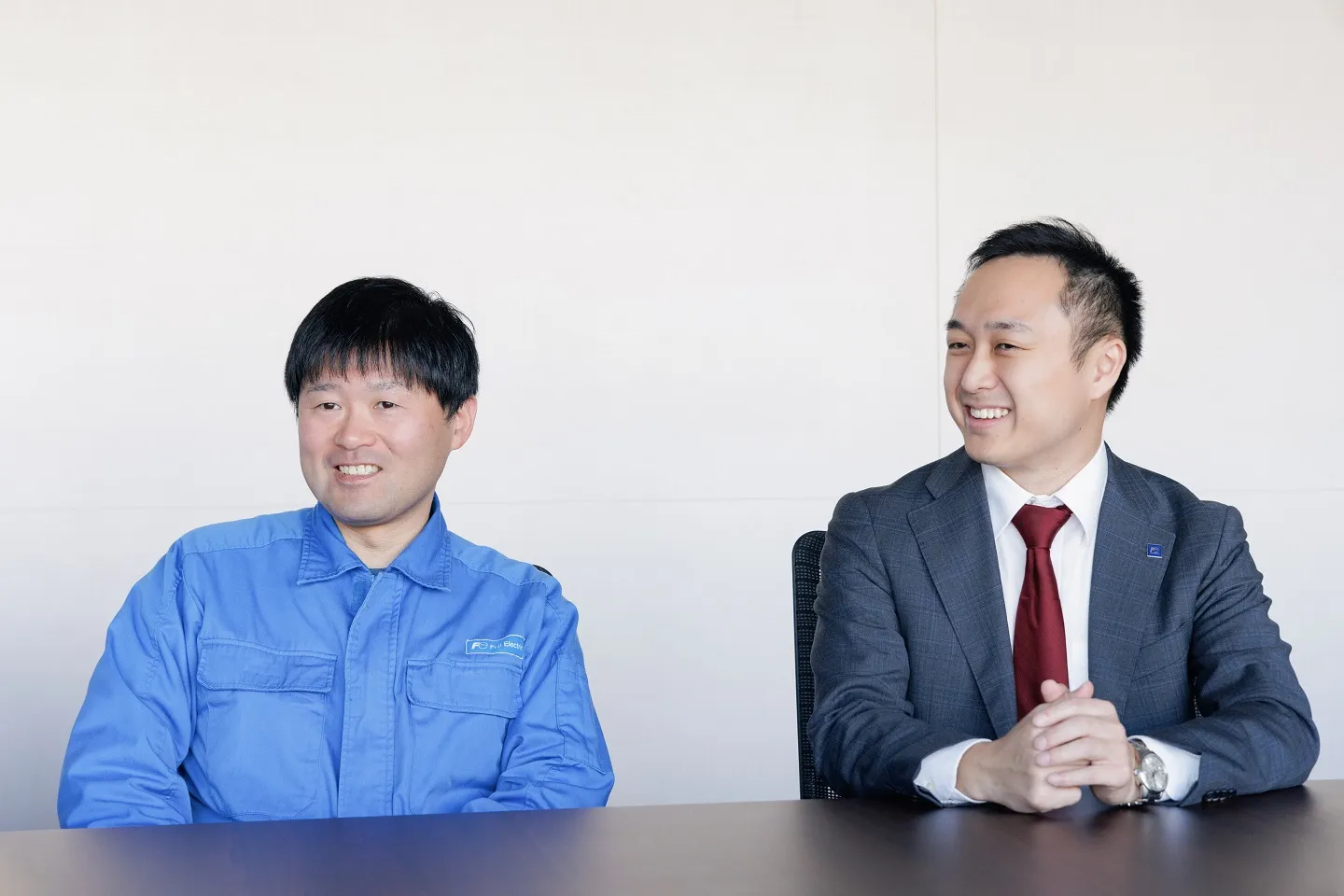
Our mission: To be quick to create something more competitive
SiC, a compound of silicon (Si) and carbon (C), has lower energy loss in power conversion than Si, and it can also increase output current. It has long been considered an ideal material for power semiconductors for electric vehicles, as they require low loss and high output.
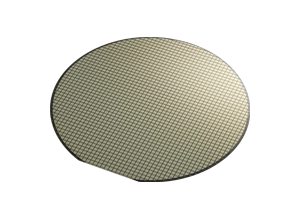
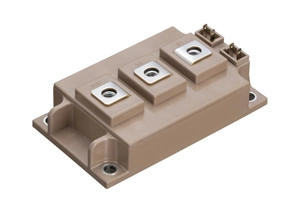
SiC wafers themselves are more expensive than Si wafers. Also, the material has a high defect rate, resulting in poor yield, and it requires a unique process in chip processing that requires special equipment, resulting in high cost. However, SiC can provide significant advantages in power converters for renewable energy and drive units for electric railways and other applications in the so-called “large-capacity field,” which requires large current and high voltage. Fuji Electric also applied SiC power semiconductor to our power conditioning systems for solar power generation for the first time in 2014, but cost reduction still remained an issue in practical application for electric vehicles in the medium capacity range.
However, with top manufacturers of electric vehicles accelerating their work toward SiC, there was no time to lose, and so Kojima and the development department began developing a new prototype. The mission set for the development department was to be quick to create something more competitive.
Close communication in the development department pays off
Chips (elements) have a great impact on the performance of power semiconductors, including power conversion efficiency. They are produced by forming electronic circuits on a disk-shaped wafer and cutting it into squares of several mm in size. Moriya, who was in charge of designing the chip, first got involved with semiconductor development in 2016. Though he now serves as the leader, his past work was research on magnetic disks, which has nothing to do with semiconductors. Despite that, Moriya says, “I never felt lost because people around me taught me everything I needed to know, no matter how small.” However, he did struggle in developing the prototype.
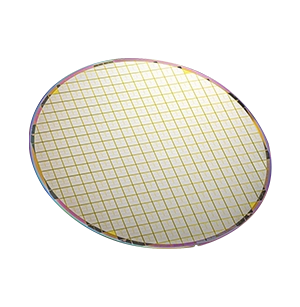
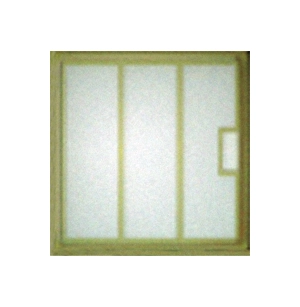
A wafer with electronic circuits formed on it (left) and a chip (element) (right)
Note: Both photos are of Si
“After many structural simulations, I thought I had achieved the optimum design, but then unexpected problems arose, and I found myself in a desperate situation.”
Saito, who joined the company in the same year as Moriya, is in charge of the development of packaging, which involves the use of chips followed by metal wiring and sealing with resin. To secure interior space and improve the driving range of automobiles, size reduction is needed for each component to be mounted. While SiC can be expected to reduce the size of the module, the smaller size causes difficulties in internal electrical wiring.
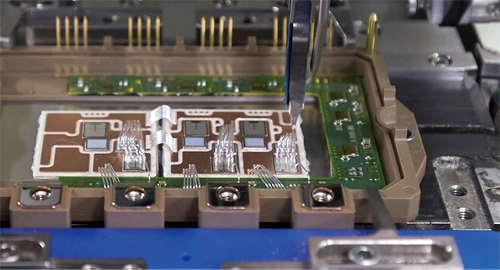
Metal wires connecting the chip and terminal case are joined using an ultrasonic method to complete electric
“For power modules (power semiconductors), the balance between the chip and package is important not only in terms of size but also in terms of heat dissipation and reliability,” says Saito. “I told Kojima-san and Moriya-san that it couldn't be handled on the package side and asked them to improve the chip.”
The close communication between these three paid off, and a new prototype SiC power semiconductor was completed in December 2022.
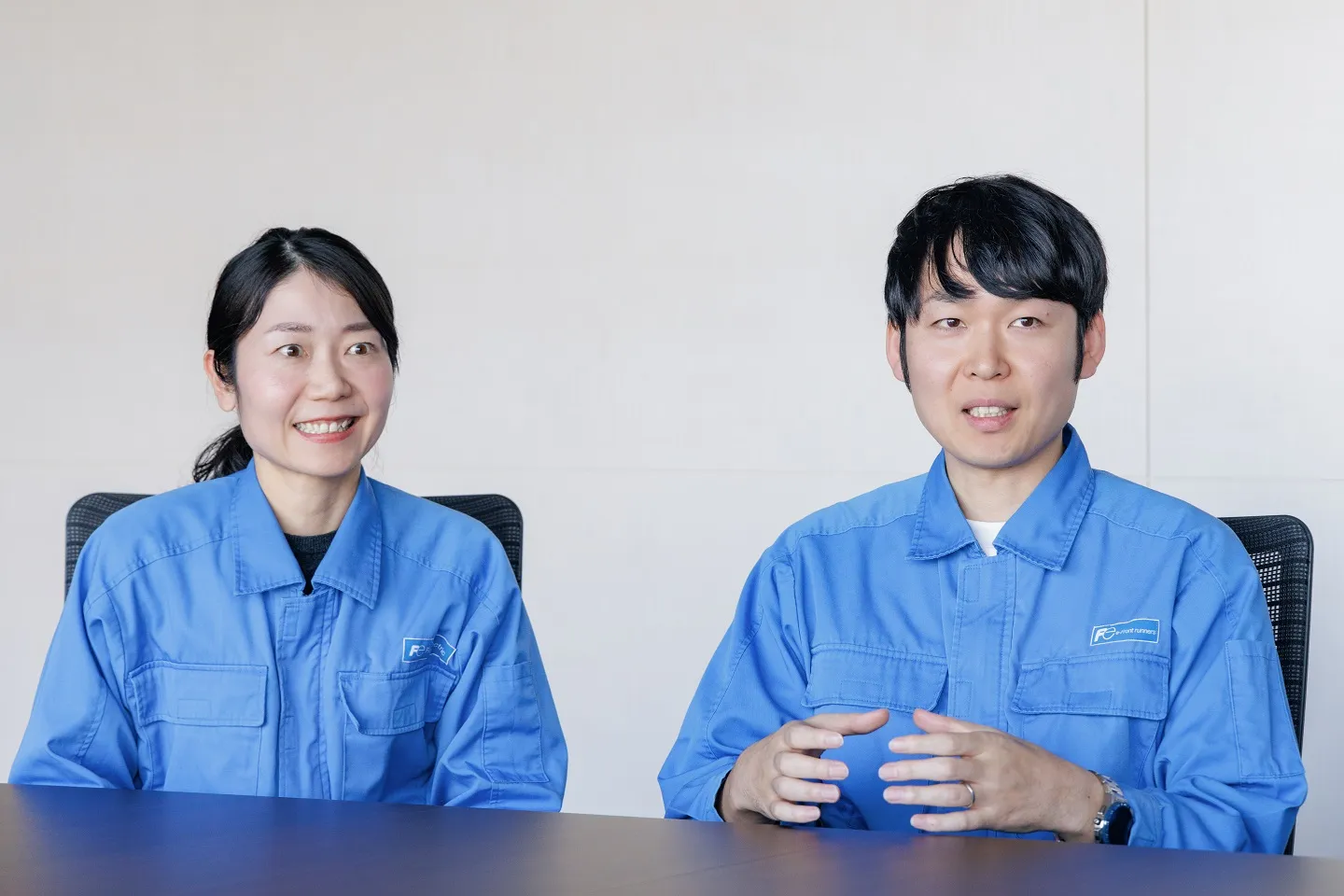
It took six quotations in six months to satisfy the customer
While the development department was working on the prototype, Honna of the sales department in charge of European EV manufacturers was struggling every day, negotiating prices with a customer. The problem was that the cost of the product was too high, and the customer said that they wanted it reduced to less than half. After hearing that, Honna continued holding many discussions with the development and the planning departments on a daily basis and negotiating with the customer, but it was all to no avail. He sent five quotations in six months, but it started to feel like he was being ignored. There was no way to beat competitors without drastic cost improvements. Honna made up his mind and visited the development department to explain his thoughts.
Striving to meet the expectations of the sales department, the development department also made efforts and thoroughly eliminated the factors leading to chip quality defects and improved the non-defective ratio to pursue cost reduction. Also, in order to achieve both cost and reliability, they conducted an extensive review of the chip structure and closely examined the process equipment, conditions, flow for optimization, and a variety of other items.
Then, in early December 2023, Honna’s sixth quotation received a reply. He opened the email immediately and the word “competitive” jumped out at him.
“I finally felt like things were going our way,” he says. “It also showed that we were able to match other companies in terms of cost.”
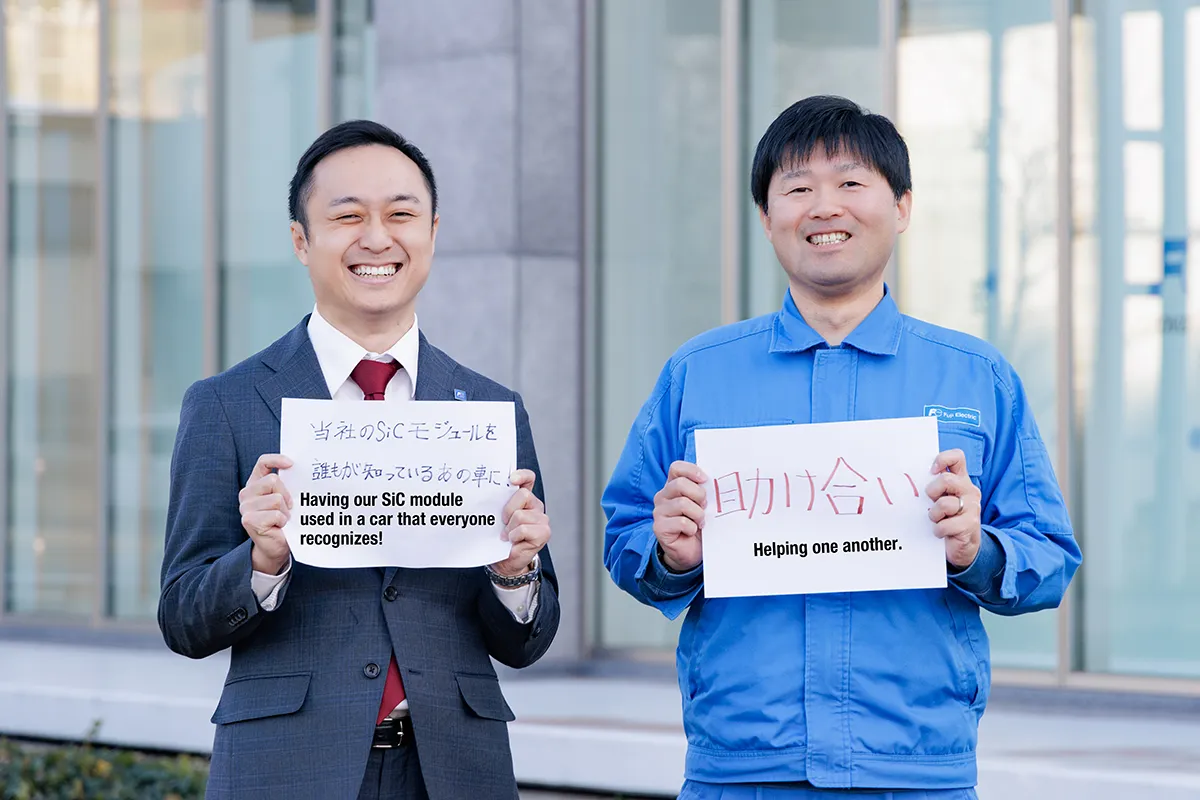
Changes in distribution channels as the mass production plan materialized
SiC power semiconductors cost more than Si power semiconductors. Given this, it was expected that the mainstream would be SiC power semiconductors for large vehicles and sports cars, as this can leverage SiC’s benefits of low loss and high power output. However, it is essential to mass-produce SiC power semiconductors at low cost so they can be expanded to medium-sized vehicles in the future. Fuji Electric plans to increase its production capacity for SiC power semiconductors by 50 times that of FY2022 by FY2026.
The revolution brought about by electrified vehicles changed the driving force from engines to motors. This also creates a need to build new distribution channels at the same time. Honna says,
“For SiC power semiconductor chips, the one who designates the manufacturer is usually the automotive manufacturer, and now, Fuji Electric can deal with them directly. This would’ve been unthinkable in the production pyramid of conventional gasoline-powered vehicles. Electric vehicles are a new field, and we still have opportunities to expand distribution channels.”
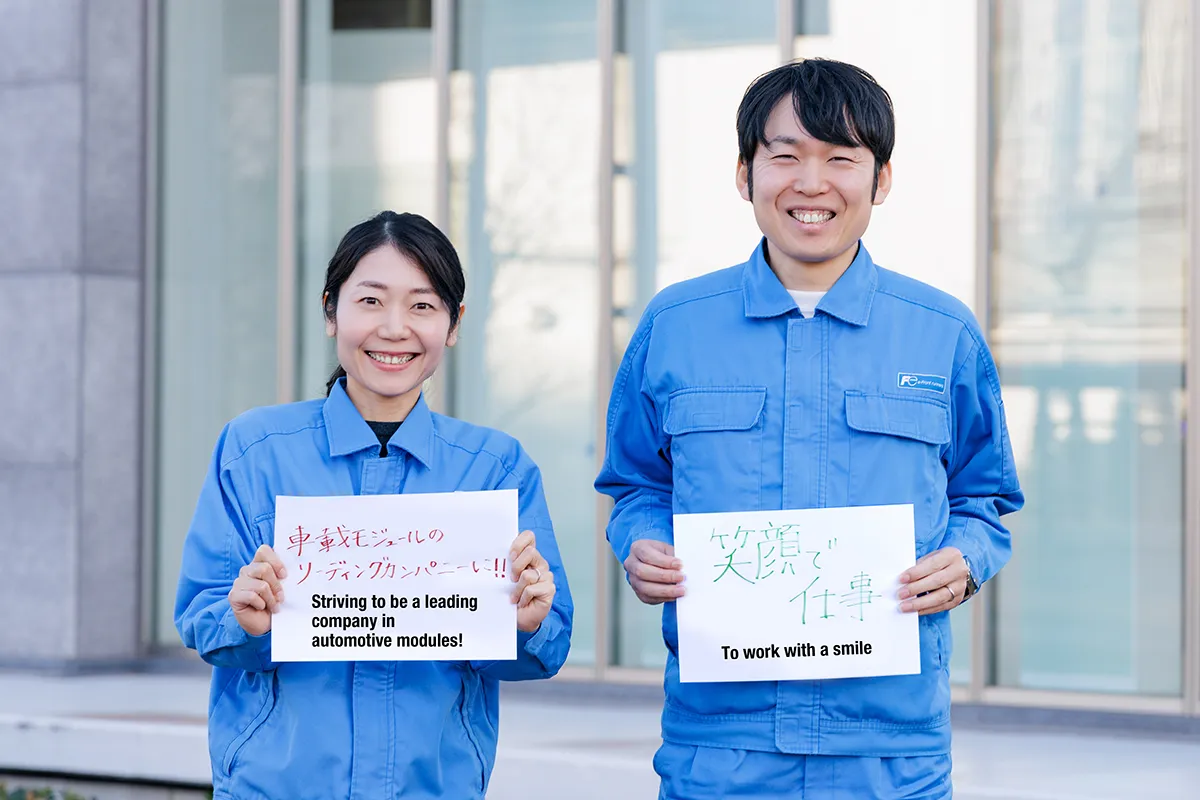
Saito wrote, “To be the leading company of automotive modules!” and Moriya wrote, “To work with a smile.”
Seamless development brings about changes in the workplace
Many of Saito’s colleagues are in her generation. Regardless of gender, people of parenting age sometimes have to take time off work quite suddenly when their children get sick.
However, the SiC power semiconductor could not be achieved without seamless development in a short turnaround, with no breaks. Given this, the development department decided to have each member proactively share their work, progress, and expertise with everyone else. According to Saito,
“This allowed us to successfully minimize situations where development was hindered by the absence of one person. There were also times where other members jumped in with tips on how to solve problems. I think that this system allows us to work together as a team and achieve our goals while being flexible about working styles.”
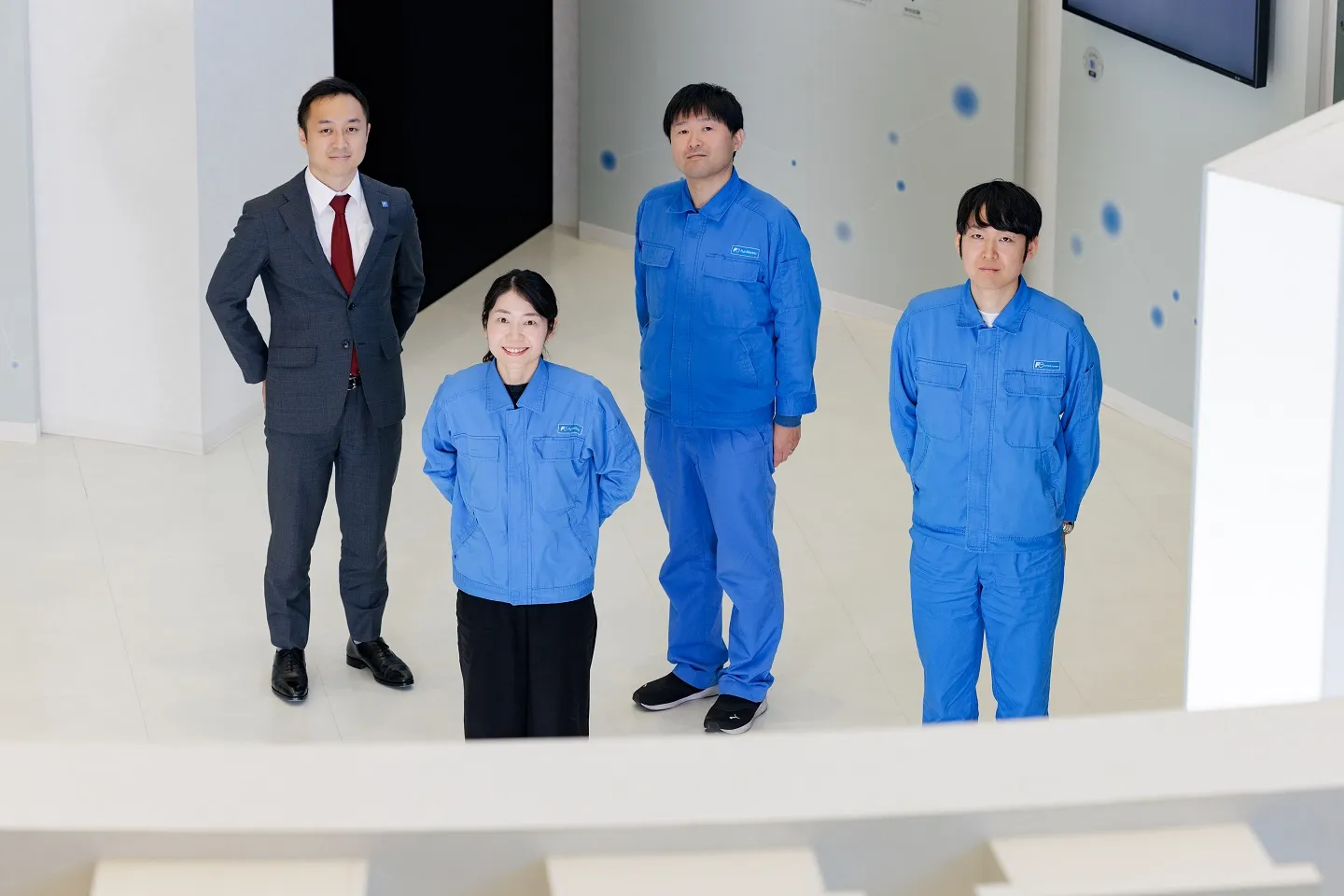
SiC power semiconductors are attracting attention as the heart of electric vehicles, which are a huge market. Taking an emotional look back at his time working on the tumultuous front lines of development, Kojima says.
“SiC has been receiving an increasing attention amount of attention these last six or seven years. But I had been focusing on SiC ever since I first joined the company because of its potential as a material for power semiconductors that has characteristics superior to those of conventional Si. Leveraging these characteristics raises expectations for reducing the size and loss of the power converters on which power semiconductors are mounted, and I was confident that this work would make a valuable contribution to energy conservation. I’ve learned that if you continuously apply yourself to your research with motivation, you might find yourself at the leading edge of the era.”
Times can suddenly change without warning. Companies must find a way to fit into that paradigm shift. Fuji Electric has human resources who can cope with such upheaval.
Recommended
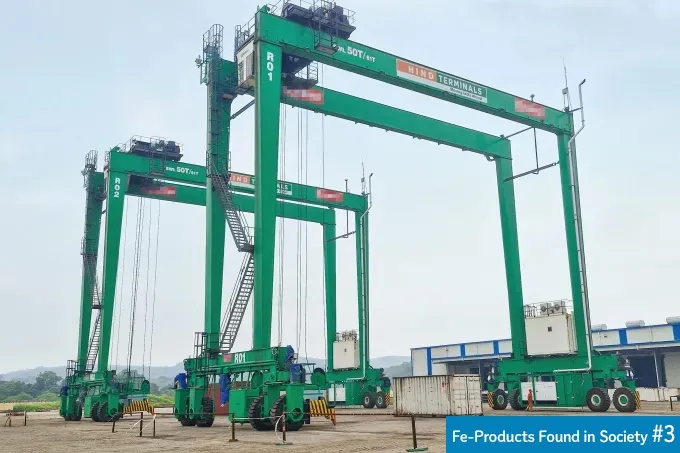
July 30,2025
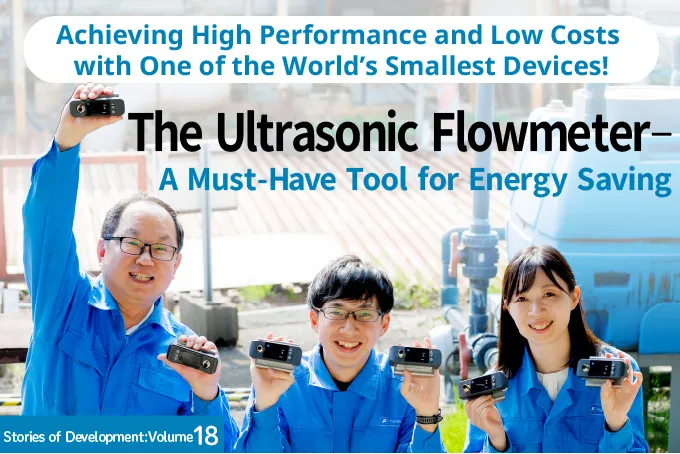
July 28,2025
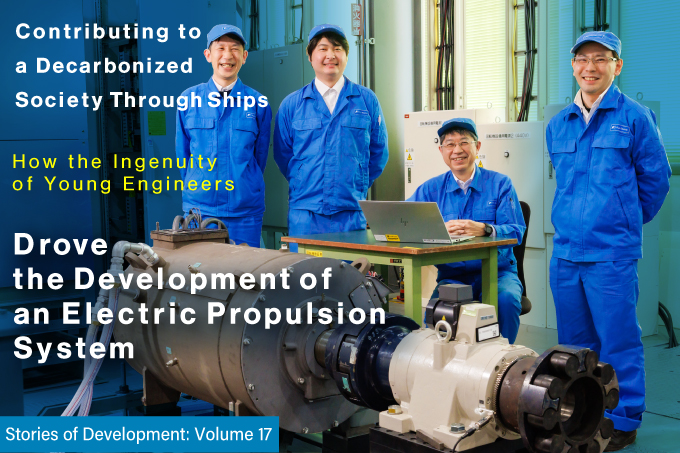
July 7,2025
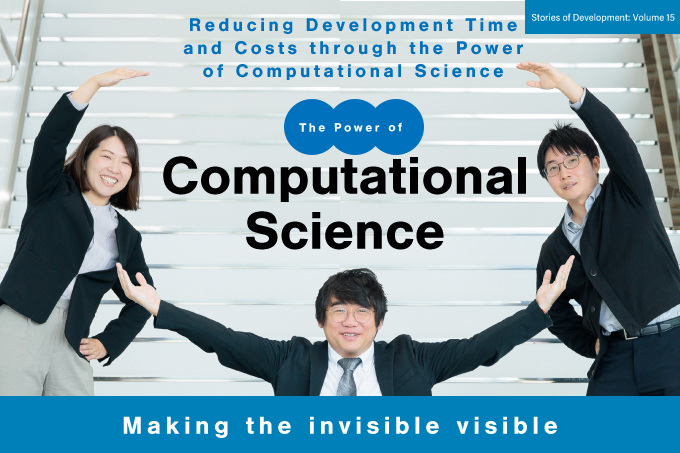
June 27,2025
